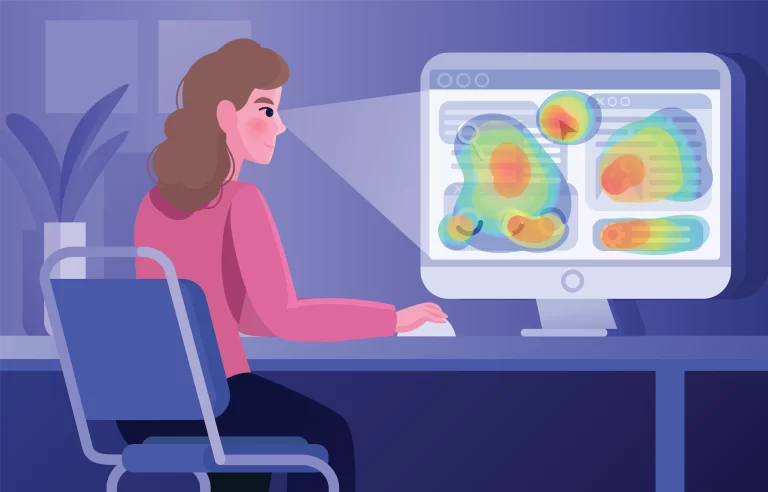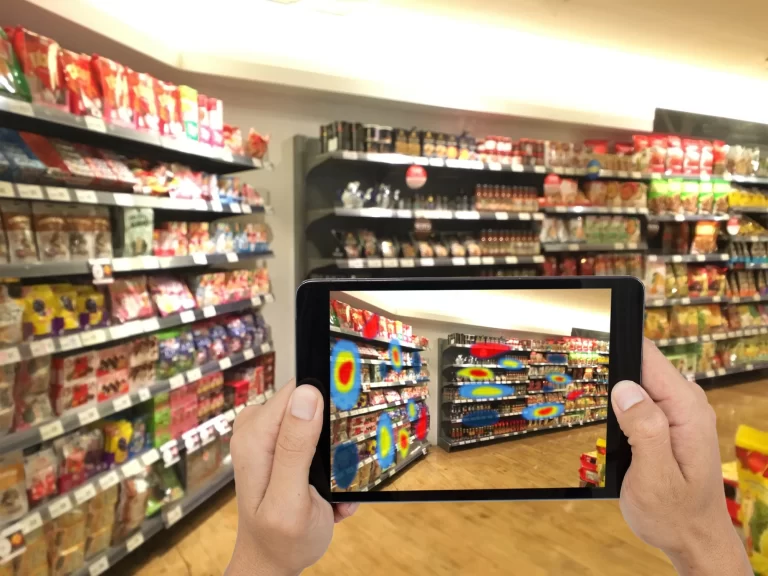In today’s digital-first world, businesses must go beyond intuition and guesswork to understand consumer behavior. One groundbreaking method that has gained significant traction in recent years is eye tracking, a neuromarketing tool that reveals the cognitive processes behind a user’s interaction with digital platforms. By monitoring eye movements, businesses can uncover critical insights about what captures attention, how information is processed, and how users navigate websites or advertisements.
In this blog, we will delve into the concept of eye tracking, explore its applications, and discuss how businesses can leverage it to optimize user experiences. We’ll use the example of a Mercedes-Benz case study to highlight the transformative potential of this technology.
What is Eye Tracking?
Eye tracking involves using advanced technology to monitor and record eye movements, including gaze direction, duration, and the sequence in which users view different elements. It provides insights into:
- Fixations: Where the user’s eyes rest and for how long.
- Saccades: The rapid movements of the eyes between fixations.
- Time to First Fixation: How quickly a user notices a specific area of interest (AOI).
- Gaze Heatmaps: Visual representations showing the most viewed areas.
By understanding these metrics, businesses can identify which elements of their digital platforms are effective and which need improvement.
Applications of Eye Tracking in Business
At Elumind, our eye tracking services are designed to provide actionable insights that drive results. We combine state-of-the-art technology with expert analysis to deliver:
- In-depth User Behavior Analysis: Understand how users interact with your website or advertisements in real-time.
- Custom Gaze Heatmaps: Visualize high and low-attention areas to optimize content placement.
- Conversion Optimization: Identify obstacles in user navigation and improve pathways to desired actions.
- Comprehensive Reporting: Clear, data-driven reports with actionable recommendations tailored to your goals.
Our solutions cater to businesses in e-commerce, advertising, branding, and more, helping them leverage neuromarketing to stay ahead of the competition.

The Mercedes-Benz Case Study: Eye Tracking in Action
A compelling example of eye tracking in usability testing comes from a study on the Mercedes-Benz online service appointment booking system. The aim was to compare the usability of the old and new website interfaces to enhance user experience and engagement.
Study Design and Methodology
- Participants: The study included 20 individuals familiar with the Mercedes-Benz brand. This ensured the sample represented the target audience.
- Technology: The Tobii Pro X2-30 eye tracker was used to monitor eye movements. iMotions software was utilized for data analysis, enabling comprehensive insights into user behavior.
- Procedure: Participants were tasked with booking a service appointment on both the old and new interfaces. Metrics such as processing time, time to first fixation, and fixation duration on AOIs were analyzed.
Key Findings
- Reduced Processing Time
The new interface significantly reduced the time required to complete tasks. This indicated improved usability and efficiency, a crucial factor for retaining users. - Faster Time to First Fixation
Participants were able to locate essential information more quickly on the new interface, highlighting its intuitive design. - Shorter Fixation Durations
Users spent less time processing information on the new interface, suggesting better organization and clarity of content.
These results demonstrated how eye tracking could provide actionable insights to improve digital platforms.

How Eye Tracking Transforms Marketing and User Experience
The Mercedes-Benz case study is just one example of how eye tracking can deliver tangible results. Businesses across industries can benefit from this technology in the following ways:
- Enhanced User Experience
By understanding what users focus on and why businesses can streamline website layouts to align with user expectations. Intuitive designs not only improve navigation but also increase the likelihood of conversions.
- Optimized Content Placement
Eye tracking data reveals which areas of a webpage or ad attract the most attention. Marketers can strategically place critical information, such as calls-to-action, in high-visibility zones to maximize impact.
- Data-Driven Decision Making
Unlike traditional methods relying on surveys or user interviews, eye tracking provides objective, real-time data about user behavior. This reduces guesswork and ensures marketing and design decisions are backed by evidence.
- Improved Engagement and Retention
Content that resonates visually with users leads to higher engagement rates. For example, strategically designed landing pages can reduce bounce rates and keep users interacting longer.
- Cost Savings
Eye tracking helps businesses focus their resources on what works. By eliminating ineffective elements and doubling down on high-performing ones, companies can achieve better results without inflating budgets.

The Future of Eye Tracking in Neuromarketing
As eye tracking technology becomes more sophisticated, its applications are expanding rapidly. Advances in artificial intelligence and machine learning are enabling deeper analysis of gaze data, uncovering even more nuanced insights about consumer behavior.
Furthermore, integrating eye tracking with other neuromarketing tools, such as facial expression analysis and EEG, provides a holistic view of how users interact with digital content. This synergy is paving the way for hyper-personalized marketing strategies that resonate on a deeper, more emotional level.
Conclusion
Eye tracking is not just a tool; it’s a window into the minds of consumers. From improving website usability to optimizing advertising strategies, this technology offers invaluable insights that help businesses connect more effectively with their audiences.
The Mercedes-Benz case study demonstrates how eye tracking can identify pain points, highlight strengths, and guide design improvements. At Elumind, we bring these capabilities to life, helping businesses enhance their marketing strategies and user experiences.
If you’re interested in learning more about our neuromarketing services, including eye tracking, contact us today to explore how we can transform your business.







